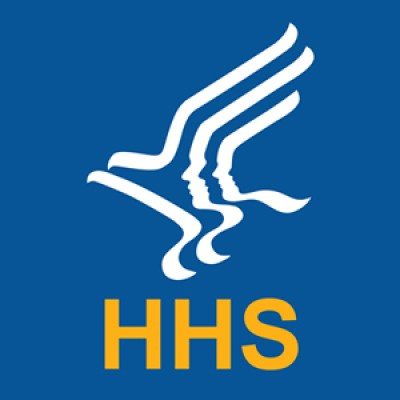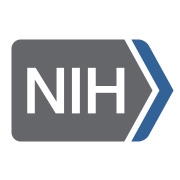The Fractured Foundations of Public Health: A Crisis in Leadership and Trust
June 10, 2025, 10:15 pm

Location: United States, Georgia, Atlanta
Employees: 10001+
Founded date: 1946

Location: United States, District of Columbia, Washington
Employees: 10001+
Founded date: 1953
Total raised: $56.52M

Location: United States, Maryland, Bethesda
Employees: 10001+
Founded date: 1887
In the realm of public health, leadership is paramount. It’s the compass guiding us through storms of disease and uncertainty. Yet, recent events reveal a disconcerting reality: the compass is broken. The Centers for Disease Control and Prevention (CDC) and the National Institutes of Health (NIH) are embroiled in turmoil, raising questions about their ability to protect public health.
The CDC, once a beacon of hope during health crises, now finds itself in a leadership quagmire. The recent appointment of an acting director, Monarez, has sparked confusion and concern. Her lack of medical experience contrasts sharply with the agency's historical precedent of being led by seasoned medical professionals. This shift is akin to a ship being captained by someone unfamiliar with the waters. The crew—composed of highly qualified medical experts—looks on, uncertain of who will steer the ship in a crisis.
Communication breakdowns are rampant. An email thanking “new acting directors” was sent out, only to be contradicted days later by a Senate hearing. Employees report Monarez’s absence during critical periods, leading to stalled decisions and a lack of direction. In public health, indecision can be deadly. As one epidemiologist aptly put it, the CDC is “a crisis, waiting for a crisis to happen.”
The stakes are high. The CDC's advisory panel recently convened to discuss vaccine policies, but uncertainty loomed over who would review their recommendations. Weeks passed without clarity, and decisions that could save lives were left hanging in the balance. The situation worsened when Secretary Kennedy announced new COVID-19 vaccine guidelines without consulting the advisory panel. This unilateral decision-making undermines the very foundation of scientific consensus that public health relies upon.
Meanwhile, the NIH is grappling with its own set of challenges. A declaration from NIH scientists has surfaced, criticizing the Trump administration's deep cuts to public health research. The letter paints a grim picture of a “culture of fear and suppression” that has taken root within the agency. Researchers express concern that political agendas are overshadowing the imperative of human safety and scientific integrity.
The NIH has terminated over 2,100 research grants, a staggering loss valued at more than $12 billion. This is not just a financial blow; it jeopardizes lives. Ongoing clinical trials have been halted, leaving participants without critical treatments. The abrupt end of a multi-drug-resistant tuberculosis study in Haiti exemplifies the human cost of these cuts. Ending a study 80% complete doesn’t save money; it wastes resources and potential breakthroughs.
Amidst this turmoil, a group of NIH employees has stepped forward, shedding light on the agency's internal struggles. They argue that the current leadership is prioritizing political maneuvering over scientific progress. The NIH, once a leader in public health research, now finds itself at a crossroads. The dissenters emphasize the importance of academic freedom and the need for a return to a science-driven approach.
The implications of these leadership crises extend beyond the walls of the CDC and NIH. They ripple through communities, eroding public trust in health institutions. When the public perceives that decisions are being made without scientific backing, skepticism grows. This skepticism can hinder vaccination efforts and public compliance during health emergencies.
The recent guidance on COVID-19 vaccines serves as a case in point. The mixed messages regarding vaccinations for healthy children and pregnant women have left many confused. Pregnant women, who are at higher risk for severe illness from COVID-19, were initially excluded from recommendations. This contradiction raises alarms about the decision-making process and the motivations behind it.
Public health thrives on trust. When that trust is compromised, the consequences can be dire. Communities rely on clear, consistent messaging from health authorities. They need to believe that the guidance they receive is rooted in science, not politics. The current state of affairs threatens to undermine that trust.
As we navigate these turbulent waters, it is crucial for the CDC and NIH to re-establish their credibility. Transparency must be prioritized. Open communication with the public and among health professionals is essential. The agencies must demonstrate that they are listening to the concerns of their employees and the communities they serve.
In conclusion, the fractures within the CDC and NIH reveal a broader crisis in public health leadership. The stakes are high, and the consequences of inaction are severe. It is time for these institutions to reclaim their roles as trusted leaders in public health. They must prioritize science over politics, clarity over confusion, and trust over fear. Only then can they effectively navigate the challenges that lie ahead and safeguard the health of the nation. The compass must be repaired, and the ship must be steered back on course.
The CDC, once a beacon of hope during health crises, now finds itself in a leadership quagmire. The recent appointment of an acting director, Monarez, has sparked confusion and concern. Her lack of medical experience contrasts sharply with the agency's historical precedent of being led by seasoned medical professionals. This shift is akin to a ship being captained by someone unfamiliar with the waters. The crew—composed of highly qualified medical experts—looks on, uncertain of who will steer the ship in a crisis.
Communication breakdowns are rampant. An email thanking “new acting directors” was sent out, only to be contradicted days later by a Senate hearing. Employees report Monarez’s absence during critical periods, leading to stalled decisions and a lack of direction. In public health, indecision can be deadly. As one epidemiologist aptly put it, the CDC is “a crisis, waiting for a crisis to happen.”
The stakes are high. The CDC's advisory panel recently convened to discuss vaccine policies, but uncertainty loomed over who would review their recommendations. Weeks passed without clarity, and decisions that could save lives were left hanging in the balance. The situation worsened when Secretary Kennedy announced new COVID-19 vaccine guidelines without consulting the advisory panel. This unilateral decision-making undermines the very foundation of scientific consensus that public health relies upon.
Meanwhile, the NIH is grappling with its own set of challenges. A declaration from NIH scientists has surfaced, criticizing the Trump administration's deep cuts to public health research. The letter paints a grim picture of a “culture of fear and suppression” that has taken root within the agency. Researchers express concern that political agendas are overshadowing the imperative of human safety and scientific integrity.
The NIH has terminated over 2,100 research grants, a staggering loss valued at more than $12 billion. This is not just a financial blow; it jeopardizes lives. Ongoing clinical trials have been halted, leaving participants without critical treatments. The abrupt end of a multi-drug-resistant tuberculosis study in Haiti exemplifies the human cost of these cuts. Ending a study 80% complete doesn’t save money; it wastes resources and potential breakthroughs.
Amidst this turmoil, a group of NIH employees has stepped forward, shedding light on the agency's internal struggles. They argue that the current leadership is prioritizing political maneuvering over scientific progress. The NIH, once a leader in public health research, now finds itself at a crossroads. The dissenters emphasize the importance of academic freedom and the need for a return to a science-driven approach.
The implications of these leadership crises extend beyond the walls of the CDC and NIH. They ripple through communities, eroding public trust in health institutions. When the public perceives that decisions are being made without scientific backing, skepticism grows. This skepticism can hinder vaccination efforts and public compliance during health emergencies.
The recent guidance on COVID-19 vaccines serves as a case in point. The mixed messages regarding vaccinations for healthy children and pregnant women have left many confused. Pregnant women, who are at higher risk for severe illness from COVID-19, were initially excluded from recommendations. This contradiction raises alarms about the decision-making process and the motivations behind it.
Public health thrives on trust. When that trust is compromised, the consequences can be dire. Communities rely on clear, consistent messaging from health authorities. They need to believe that the guidance they receive is rooted in science, not politics. The current state of affairs threatens to undermine that trust.
As we navigate these turbulent waters, it is crucial for the CDC and NIH to re-establish their credibility. Transparency must be prioritized. Open communication with the public and among health professionals is essential. The agencies must demonstrate that they are listening to the concerns of their employees and the communities they serve.
In conclusion, the fractures within the CDC and NIH reveal a broader crisis in public health leadership. The stakes are high, and the consequences of inaction are severe. It is time for these institutions to reclaim their roles as trusted leaders in public health. They must prioritize science over politics, clarity over confusion, and trust over fear. Only then can they effectively navigate the challenges that lie ahead and safeguard the health of the nation. The compass must be repaired, and the ship must be steered back on course.
